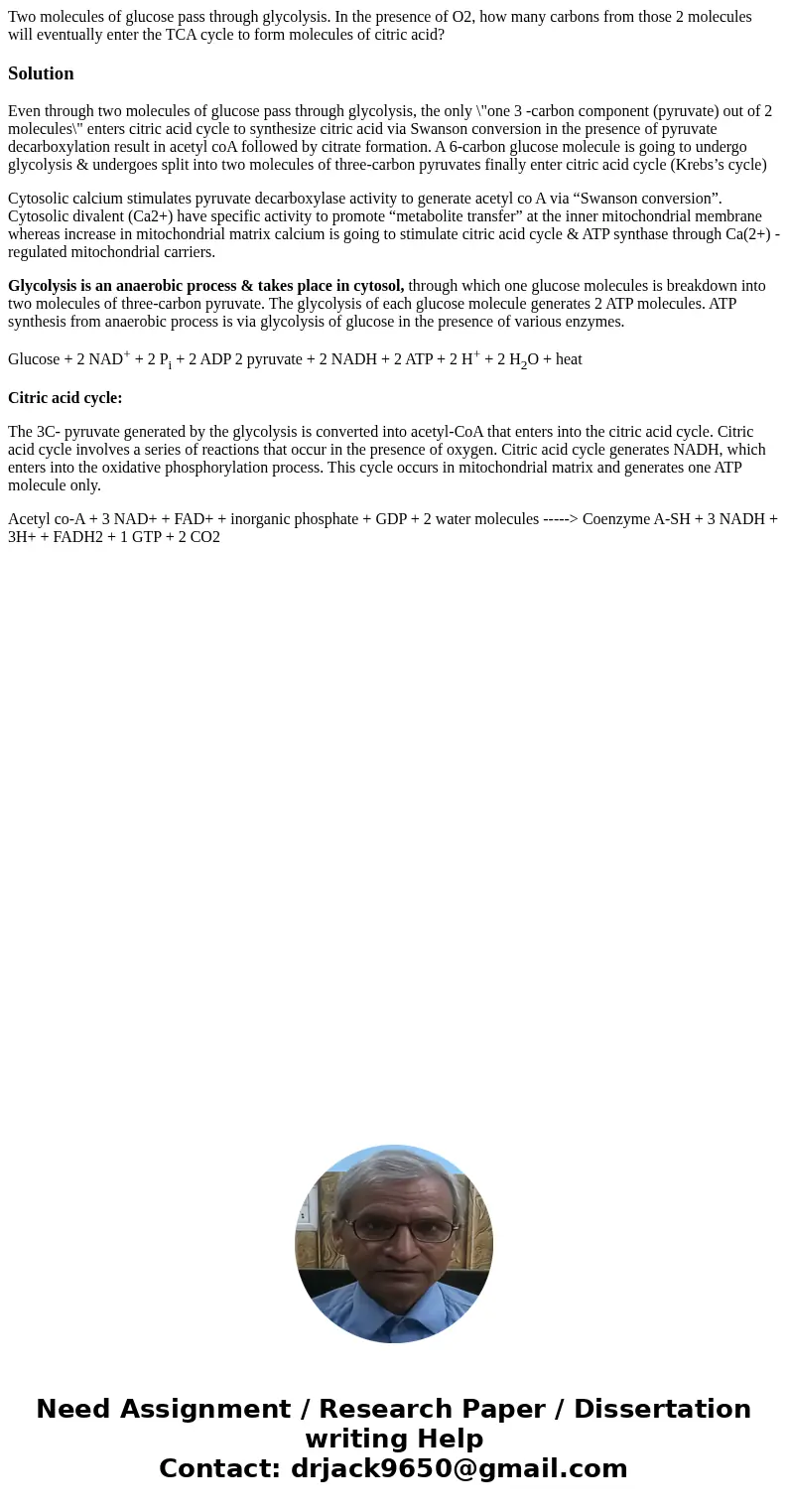Two molecules of glucose pass through glycolysis In the pres
Two molecules of glucose pass through glycolysis. In the presence of O2, how many carbons from those 2 molecules will eventually enter the TCA cycle to form molecules of citric acid?
Solution
Even through two molecules of glucose pass through glycolysis, the only \"one 3 -carbon component (pyruvate) out of 2 molecules\" enters citric acid cycle to synthesize citric acid via Swanson conversion in the presence of pyruvate decarboxylation result in acetyl coA followed by citrate formation. A 6-carbon glucose molecule is going to undergo glycolysis & undergoes split into two molecules of three-carbon pyruvates finally enter citric acid cycle (Krebs’s cycle)
Cytosolic calcium stimulates pyruvate decarboxylase activity to generate acetyl co A via “Swanson conversion”. Cytosolic divalent (Ca2+) have specific activity to promote “metabolite transfer” at the inner mitochondrial membrane whereas increase in mitochondrial matrix calcium is going to stimulate citric acid cycle & ATP synthase through Ca(2+) -regulated mitochondrial carriers.
Glycolysis is an anaerobic process & takes place in cytosol, through which one glucose molecules is breakdown into two molecules of three-carbon pyruvate. The glycolysis of each glucose molecule generates 2 ATP molecules. ATP synthesis from anaerobic process is via glycolysis of glucose in the presence of various enzymes.
Glucose + 2 NAD+ + 2 Pi + 2 ADP 2 pyruvate + 2 NADH + 2 ATP + 2 H+ + 2 H2O + heat
Citric acid cycle:
The 3C- pyruvate generated by the glycolysis is converted into acetyl-CoA that enters into the citric acid cycle. Citric acid cycle involves a series of reactions that occur in the presence of oxygen. Citric acid cycle generates NADH, which enters into the oxidative phosphorylation process. This cycle occurs in mitochondrial matrix and generates one ATP molecule only.
Acetyl co-A + 3 NAD+ + FAD+ + inorganic phosphate + GDP + 2 water molecules -----> Coenzyme A-SH + 3 NADH + 3H+ + FADH2 + 1 GTP + 2 CO2

 Homework Sourse
Homework Sourse